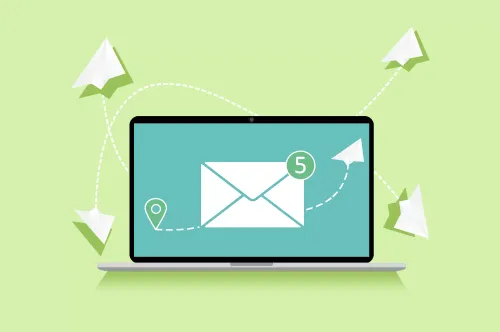Email communication has become an indispensable part of our personal and professional lives. However, the information within an email goes beyond the message body. Email headers contain valuable metadata that holds crucial details about the email's origin, delivery path, and security. By leveraging email checker headers, you can unlock insights, diagnose issues, and enhance the security of your email communications. In this comprehensive guide, we will explore the world of email checker headers, their significance, and how they can empower you to safeguard your emails effectively.
Understanding Email Checker Headers

Email checker headers, also known as email headers or message headers, are the hidden part of an email that provides detailed information about its journey from the sender to the recipient. These headers consist of various fields and data points, including sender and recipient addresses, timestamps, routing information, and security-related details. Analyzing email headers can reveal important insights about the authenticity, delivery path, and potential threats associated with an email.
The Significance of Email Checker Headers
Email checker headers play a critical role in understanding and securing email communications. By analyzing the headers, you can:
- Verify Email Authenticity: Email headers contain sender and recipient addresses, allowing you to verify the authenticity of the email. You can identify whether the email is from a trusted source or potentially malicious.
- Track Email Delivery Path: Email headers provide information about the servers and routes involved in delivering the email. Analyzing these details helps troubleshoot delivery issues and identify potential bottlenecks or security vulnerabilities.
- Detect Email Spoofing: Email spoofing is a common technique used by malicious actors to impersonate legitimate senders. By scrutinizing the email headers, you can spot anomalies and inconsistencies that indicate spoofing attempts.
- Identify Email Security Risks: Email headers offer insights into the security measures applied during email transmission, such as encryption protocols and authentication mechanisms. Analyzing these details helps identify potential security risks or vulnerabilities.
Key Elements in Email Checker Headers

To effectively analyze email checker headers, it's essential to understand the key elements and data points they contain. Here are some crucial elements to focus on:
1. From:
The "From" field in the email header indicates the sender's email address. It helps verify the authenticity of the sender.
2. To:
The "To" field denotes the recipient's email address. It confirms the intended recipient of the email.
3. Received:
The "Received" field lists the servers and routes through which the email passed during its journey. It provides information about the email delivery path and can help diagnose delivery issues.
4. Subject:
The "Subject" field contains the email's subject line, giving a glimpse into the email's content.
5. Date:
The "Date" field indicates the timestamp when the email was sent, helping establish the timeline of the communication.
6. Authentication:
The "Authentication" field reveals the authentication mechanisms used, such as SPF (Sender Policy Framework) and DKIM (DomainKeys Identified Mail). This helps verify the email's legitimacy and guard against spoofing.
7. X-Headers:
X-Headers are custom headers that provide additional information, such as spam filter details, email routing instructions, or other specific data.
Advanced Tools for Email Header Analysis
To simplify the process of email header analysis and gain deeper insights, several advanced tools are available. Let's explore a few prominent options:
- MXToolbox Email Header Analyzer: MXToolbox offers a comprehensive email header analyzer that decodes and presents email headers in a user-friendly format. It highlights important fields, provides SPF and DKIM analysis, and helps identify potential issues or anomalies.
- Microsoft 365 Message Header Analyzer: Microsoft 365 Message Header Analyzer is a powerful tool that enables in-depth analysis of email headers. It provides a detailed breakdown of each field, allows you to view the delivery path, and offers insights into email authentication and encryption.
- Google Mail Header Analysis: Google Mail Header Analysis provides a step-by-step guide on how to view and analyze email headers in Gmail. It helps users understand the different header fields, interpret the data, and make informed decisions regarding email security.
- Google Apps Toolbox Messageheader: Google Apps Toolbox Messageheader is a web-based tool that allows you to analyze and decode email headers. It presents the information in a structured manner, making it easier to understand the email's origin, delivery route, and security measures.
- Microsoft Outlook Message Header Viewer: Microsoft Outlook Message Header Viewer is an integrated feature in Outlook that enables users to view and analyze email headers. It provides insights into the delivery path, sender information, and authentication mechanisms used.
Frequently Asked Questions (FAQs)
Q1: Can email headers be manipulated or forged?
Email headers can be manipulated or forged, especially in cases of email spoofing. It's important to carefully analyze the headers, look for inconsistencies, and use additional authentication mechanisms like SPF, DKIM, and DMARC to mitigate the risks associated with forged headers.
Q2: How can I identify phishing emails through email headers?
Analyzing email headers can help identify phishing emails. Look for anomalies in the sender's email address, check for discrepancies in the delivery path, and scrutinize the authentication mechanisms used. Be cautious of emails requesting sensitive information or urging immediate action.
Q3: Can email headers reveal the location of the sender?
Email headers may contain IP addresses and routing information that can provide clues about the sender's location. However, keep in mind that IP addresses can be masked or routed through different servers, making it challenging to pinpoint the exact location.
Q4: How often should I analyze email headers?
Regularly analyzing email headers is recommended, especially for emails from unfamiliar sources or those that raise suspicions. It's also beneficial to perform header analysis when troubleshooting email delivery issues or investigating potential security breaches.
Q5: Are there any risks associated with sharing email headers?
Email headers usually do not contain sensitive information. However, avoid sharing email headers that include personally identifiable information (PII) or confidential details. Be cautious about privacy and security when sharing email headers with others.
Conclusion
Email checker headers hold a wealth of information that can empower you to analyze, diagnose, and secure your email communications effectively. By mastering the art of email header analysis, you can verify email authenticity, track the delivery path, detect spoofing attempts, and identify potential security risks. Leverage advanced tools and techniques to unlock valuable insights hidden within email headers and stay one step ahead of email threats. With the knowledge gained from this comprehensive guide



